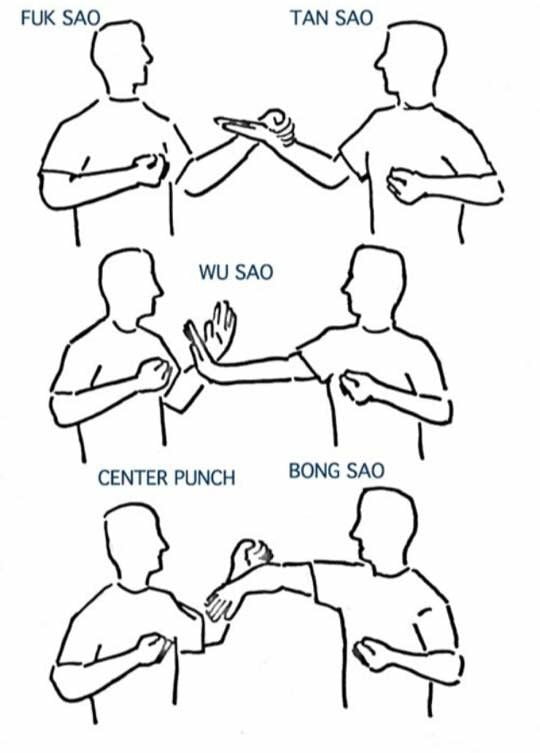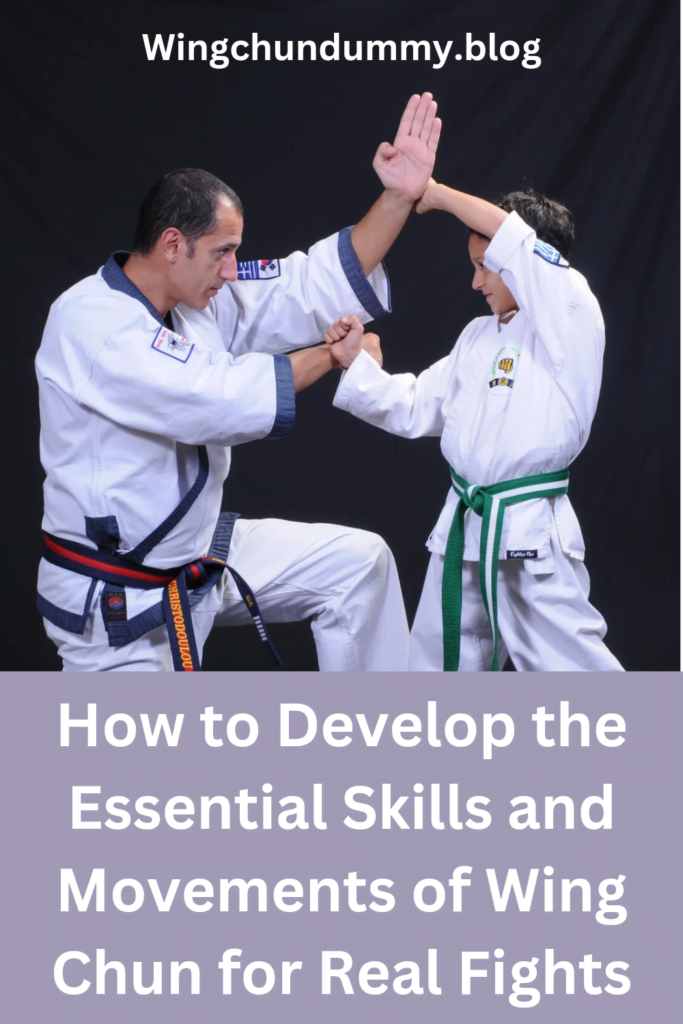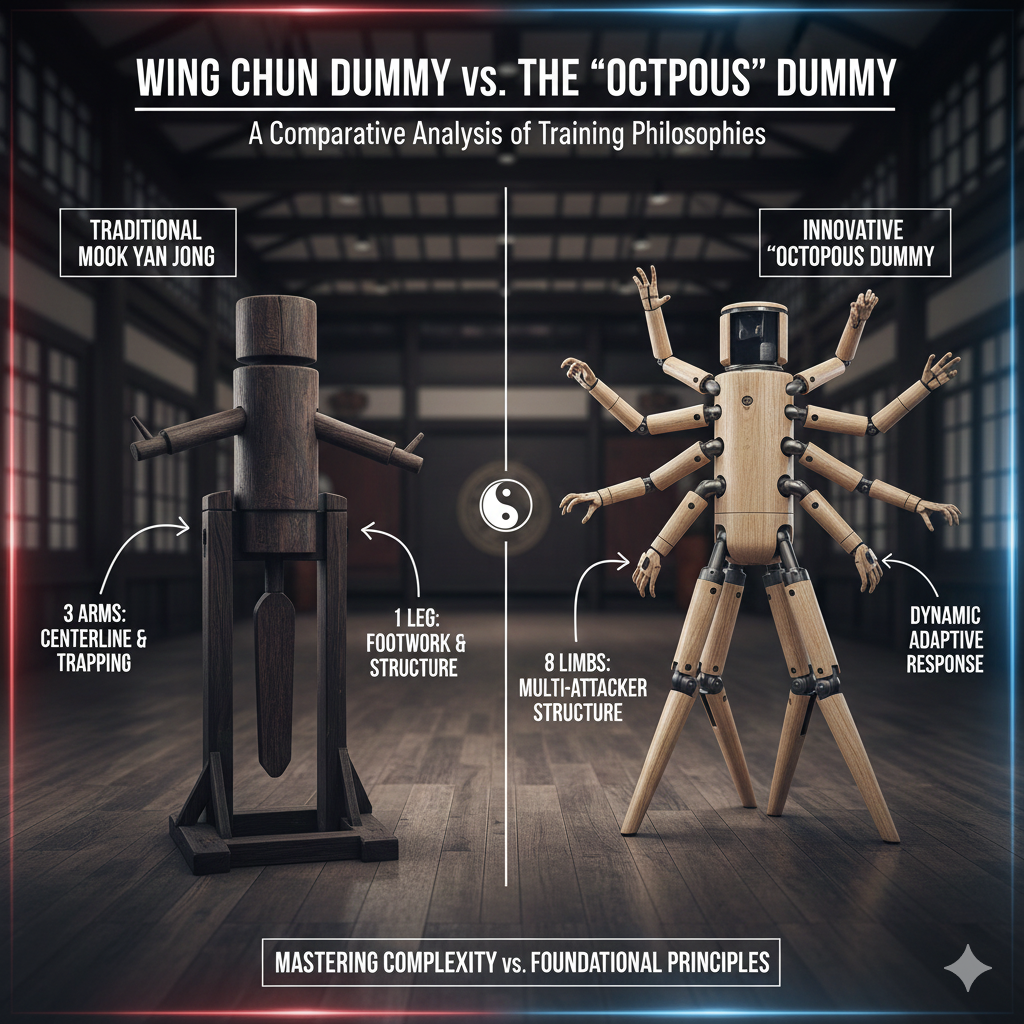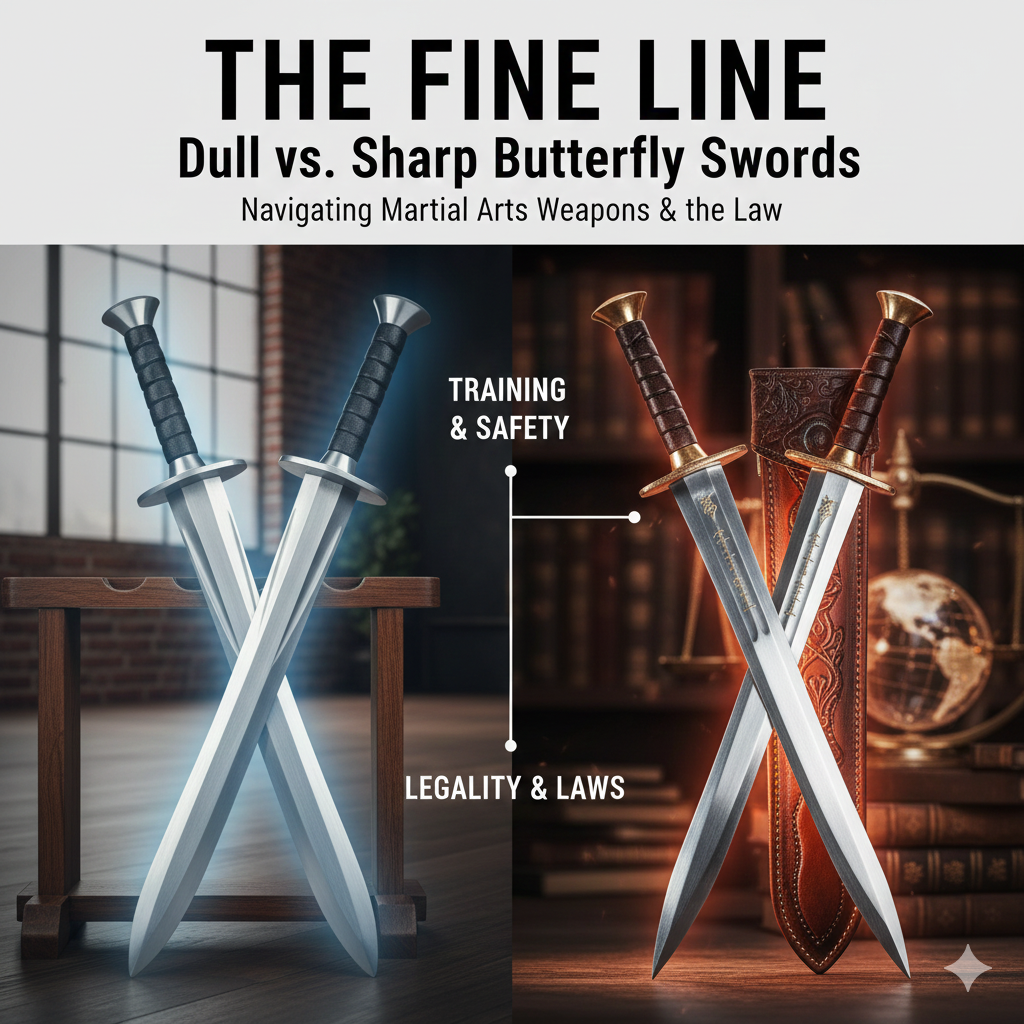Wing Chun is a traditional Chinese martial art that dates back to the 17th century. ((Essential Skills and Movements))
It was developed during the Qing Dynasty by a Buddhist nun named Ng Mui, who was inspired by the movements of a crane and a snake.
The art was later refined and popularized by practitioners including the legendary Ip Man and his famous student, Bruce Lee.
Wing Chun’s unique approach to combat has made it an enduring and respected martial art worldwide.
At its core, Wing Chun is built on principles of simplicity, directness, and efficiency.
It emphasizes economy of motion and energy, which makes it exceptionally effective in real-world self-defense scenarios.
The art focuses on close-quarters combat, making it highly practical in situations where space is limited.
Techniques in Wing Chun are designed to neutralize an opponent quickly and efficiently.
often by targeting vital points and utilizing rapid, consecutive strikes.
Philosophically, Wing Chun is rooted in concepts such as the centerline theory.
which dictates that the practitioner should protect their own central axis while attacking the opponent’s.
This principle ensures that movements are both defensive and offensive, creating a seamless flow between the two.
Additionally, the art encourages sensitivity and adaptability through practices like Chi Sao, or “sticky hands,” which trains practitioners to respond to an opponent’s movements with minimal delay.
The effectiveness of Wing Chun for self-defense lies in its practical and realistic approach.
Unlike some other martial arts that may focus on elaborate forms or high kicks.
Wing Chun’s techniques are grounded in reality.
Its strikes, blocks, and footwork are designed to be executed with speed and precision.
making it a formidable system for anyone seeking to defend themselves in real-life situations.
Core Principles and Concepts

The foundational principles of Wing Chun serve as the bedrock upon which all techniques and movements are built.
Chief among these principles is the centerline theory, which emphasizes the importance of controlling the central axis of the body.
By focusing on the centerline, a practitioner can both protect vital areas and efficiently attack those of an opponent.
This theory is crucial in maintaining balance and leveraging power in every movement.
Another essential principle is the economy of motion.
Wing Chun prioritizes direct and efficient movements to minimize wasted energy and time.
This principle is evident in its straightforward strikes and blocks, which are designed to be as effective as possible while requiring minimal effort.
Economy of motion ensures that a practitioner can sustain their energy levels during prolonged engagements and respond quickly to sudden changes in the fight.
Simultaneous attack and defense is a hallmark of Wing Chun that distinguishes it from many other martial arts.
This principle involves executing offensive and defensive actions concurrently, thereby maximizing the efficiency of each movement.
By integrating attack and defense, a Wing Chun practitioner can maintain constant pressure on an opponent while ensuring their own safety.
This duality of action is not only efficient but also disorienting for opponents, often giving the practitioner a significant tactical advantage.
These core principles guide every movement and technique in Wing Chun, making it a highly efficient martial art.
Whether employing a punch, a block, or a complex sequence of maneuvers, the practitioner always adheres to the centerline theory, economy of motion, and simultaneous attack and defense.
Understanding and internalizing these principles is crucial for anyone looking to master Wing Chun and effectively apply it in real fights.
Basic Stances and Footwork

Wing Chun, a traditional Chinese martial art, places a significant emphasis on foundational stances and footwork.
These elements are crucial for maintaining balance, stability, and mobility in real combat scenarios.
Among the essential stances in Wing Chun, the Yee Gee Kim Yeung Ma, or character ‘two’ stance, stands out as a fundamental position.
This stance involves positioning the feet in a V-shape, with knees slightly bent and directed inward.
The importance of proper posture and alignment cannot be overstated, as it ensures that the practitioner is grounded and stable, ready to react to any attack.
Proper posture in Wing Chun not only aids in maintaining balance but also enhances the effectiveness of strikes and defensive techniques.
Aligning the body correctly, from head to toe, allows for the efficient transfer of energy through the limbs.
This means that whether executing a punch, block, or kick, the practitioner can deliver maximum force with minimal effort.
Additionally, maintaining a centered posture helps in absorbing and deflecting incoming attacks, reducing the risk of being knocked off balance.
Equally important are the fundamental footwork patterns in Wing Chun, which include stepping, pivoting, and shifting.
These movements are essential for maintaining mobility and positioning during a fight.
Stepping allows the practitioner to advance or retreat swiftly, adjusting distance to control the engagement.
Pivoting, on the other hand, involves rotating the body on one foot, enabling quick directional changes and evasion of attacks.
Shifting weight from one leg to the other is crucial for redistributing balance and generating power in strikes.
Mastering these stances and footwork patterns requires consistent practice and attention to detail.
Students must focus on maintaining proper alignment, fluidity of movement, and responsiveness to their opponent’s actions.
By integrating these foundational elements into their training, Wing Chun practitioners can enhance their ability to navigate real fights with agility and confidence.
Essential Hand Techniques

Wing Chun, renowned for its efficiency and directness, incorporates several essential hand techniques that form the foundation of its combat strategy.
Mastering these techniques is crucial for effective self-defense and practical application in real fights.
Central to Wing Chun is the straight punch, known as Yat Chuen.
This punch is delivered directly from the centerline, minimizing telegraphing and maximizing speed and power.
Proper execution involves aligning the fist with the elbow and shoulder, ensuring a straight trajectory aimed at the opponent’s centerline, thus reducing the risk of counters.
Another fundamental technique is the palm strike, or Jum Sau.
The palm strike utilizes the heel of the hand to deliver a powerful blow to the opponent.
This technique is particularly effective for close-range combat, where the palm can deliver significant force without risking injury to the striker’s knuckles.
Proper form involves keeping the wrist straight and the fingers relaxed, striking through the target to maximize impact.
Blocking in Wing Chun is equally critical, with techniques like Tan Sau, Bong Sau, and Fook Sau forming the core defense mechanisms.
Tan Sau, or the palm-up block, is executed by extending the arm forward and slightly upward, creating a barrier against incoming strikes.
It is essential to maintain a slight bend in the elbow to absorb and deflect force effectively.
Bong Sau, or the wing arm block, involves raising the elbow while rotating the forearm outward, deflecting high-line attacks.
This technique requires fluidity and quick transitions to maintain defensive integrity.
Fook Sau, or the bridging arm, is a versatile hand position used to control and feel the opponent’s movements.
By maintaining light contact with the opponent’s arm, practitioners can sense changes in pressure and adjust their strategy accordingly.
Proper execution of Fook Sau involves keeping the wrist relaxed and the fingers pointed downward.
allowing for quick transitions between offensive and defensive actions.
These hand techniques, when correctly executed, provide a robust framework for both offense and defense in Wing Chun.
They are designed to work in harmony, allowing practitioners to respond swiftly and effectively to various combat scenarios.
Chi Sau (Sticky Hands) Training

Chi Sau, also known as Sticky Hands, is a fundamental training method in Wing Chun that plays a crucial role in honing a practitioner’s sensitivity, reflexes, and contact management with an opponent.
This drill is not merely a practice of techniques but a dynamic exercise that fosters the development of instinctive responses to an opponent’s movements, which is vital in real fight scenarios.
The essence of Chi Sau lies in its ability to enhance tactile sensitivity.
By maintaining continuous contact with an opponent’s arms, practitioners learn to feel and interpret the slightest changes in pressure and direction.
This heightened sensitivity allows them to respond more promptly and accurately to any offensive or defensive maneuvers.
It is through this process that the reflexes are sharpened, enabling Wing Chun practitioners to react almost instantaneously to an attack.
Moreover, Chi Sau training is instrumental in developing the ability to maintain a connection with the opponent, which is a core principle of Wing Chun.
This constant contact ensures that practitioners remain aware of their opponent’s intentions and movements, allowing for appropriate adjustments in real-time.
As they engage in Chi Sau, practitioners practice various techniques such as trapping, deflecting, and redirecting attacks, all of which are seamlessly integrated into their responses.
Chi Sau also fosters adaptability. In a real fight, conditions are unpredictable, and one’s ability to adjust to an opponent’s actions swiftly is paramount.
Through diligent Chi Sau practice, Wing Chun practitioners become adept at flowing with the opponent’s energy, turning potential threats into opportunities for counterattacks.
This adaptability is a key factor that distinguishes skilled martial artists in actual combat situations.
In conclusion, Chi Sau training is indispensable for anyone seeking to master Wing Chun for real fights.
It cultivates sensitivity, sharpens reflexes, and instills the ability to maintain and adjust contact, thereby preparing practitioners to handle the dynamic nature of real-world confrontations effectively.
Application of Techniques in Sparring
Transitioning from static drills to dynamic sparring scenarios is a critical step in mastering Wing Chun for real fights.
Static drills serve as the foundation, ingraining essential movements and techniques into muscle memory.
However, the true test lies in the ability to apply these techniques fluidly in unpredictable situations.
Sparring provides the ideal environment to bridge this gap, offering a controlled yet realistic setting to hone your skills.
To effectively integrate Wing Chun techniques into free sparring, maintaining structure is paramount.
The central line theory, a cornerstone of Wing Chun, should always be at the forefront of your mind.
This principle ensures that your attacks and defenses are efficient and direct, minimizing wasted movement.
Additionally, maintaining a strong stance and proper alignment will enhance your stability, making it easier to absorb and deflect incoming strikes.
Timing and distance management are equally crucial.
Wing Chun emphasizes close-range combat, so learning to gauge the appropriate distance to your opponent is essential.
Practice closing the gap swiftly without compromising your structure. Timing your movements to intercept attacks and exploit openings will give you a significant advantage.
Drills such as Chi Sau (sticky hands) can be particularly beneficial in developing these reflexes, as they train you to react instinctively to your opponent’s movements.
Controlled sparring is indispensable for safely practicing real-fight applications.
Start with slow, cooperative sparring sessions to build confidence and familiarity with techniques.
Gradually increase the intensity as your proficiency grows, always prioritizing safety.
Use protective gear and establish clear boundaries to prevent injuries.
Controlled sparring not only allows you to experiment with techniques but also helps in developing mental fortitude and composure under pressure.
In conclusion, the application of Wing Chun techniques in sparring is a multi-faceted process that demands dedication and mindful practice.
By focusing on structure, timing, and distance management, and engaging in controlled sparring, you can effectively translate static drills into dynamic, real-fight scenarios.
Strength and Conditioning for Wing Chun
Effective Wing Chun training extends beyond the mastery of techniques; it requires a robust foundation of strength and conditioning.
The physical conditioning necessary for Wing Chun encompasses strength training, flexibility exercises, and cardiovascular conditioning.
each playing 🎴 a crucial role in enhancing overall performance and endurance during real fights.
Strength training is fundamental to Wing Chun.
Practitioners need a well-balanced regimen that targets both upper and lower body muscles.
Core strength is particularly vital as it supports stability and power generation in movements.
Exercises such as push-ups, squats, and planks are essential components of a Wing Chun strength training program.
These exercises not only build muscle but also enhance muscle endurance.
allowing practitioners to maintain their form and power throughout prolonged engagements.
Flexibility exercises are equally important in Wing Chun.
Flexibility aids in the execution of techniques with precision and fluidity.
Stretching routines should focus on the shoulders, hips, and legs, ensuring a full range of motion.
Regular practice of dynamic stretches, such as leg swings and arm circles, can significantly improve the flexibility required for quick and effective strikes.
Flexibility also contributes to injury prevention, allowing the body to adapt to various combat scenarios without strain.
Cardiovascular conditioning is indispensable for maintaining stamina during a fight.
Wing Chun practitioners benefit from aerobic exercises that boost heart rate and improve lung capacity.
Activities such as running, skipping rope, and high-intensity interval training (HIIT) are excellent for cardiovascular development.
Enhanced cardiovascular fitness ensures that practitioners can sustain high levels of activity, delivering rapid and powerful techniques without succumbing to fatigue.
Incorporating these elements into a regular training regimen creates a comprehensive physical conditioning program tailored for Wing Chun.
By building strength, flexibility, and cardiovascular endurance, practitioners can significantly enhance their performance and resilience in real fight situations.
ensuring they are well-prepared to execute techniques with efficiency and power.
Mental Preparation and Strategy

Mental preparation is a cornerstone of effective Wing Chun practice, especially when it comes to real fights.
Developing a calm and focused mindset is crucial.
This begins with consistent meditation and mindfulness exercises that help practitioners maintain composure under pressure.
A clear mind allows for better judgment and swifter reactions, critical components in any combat scenario.
Strategic thinking in Wing Chun necessitates an awareness of both one’s own strengths and the weaknesses of an opponent.
This involves keen observation skills, enabling a practitioner to recognize and exploit vulnerabilities in an opponent’s defense.
For instance, noticing a slight hesitation or a habitual movement can provide the split-second advantage needed to gain the upper hand.
By staying mentally agile, a Wing Chun fighter can anticipate and counteract an opponent’s actions effectively.
Adaptability is another essential element of mental preparation in Wing Chun.
Real fights are unpredictable, and rigid strategies often fail.
Practitioners must be prepared to adjust their approach based on the dynamics of the encounter.
This flexibility ensures that one can respond to unexpected changes, such as a sudden shift in the opponent’s tactics or an unforeseen environmental factor.
Quick decision-making is a skill honed through rigorous training and sparring sessions.
where practitioners simulate various scenarios to enhance their responsiveness.
Furthermore, mental preparation in Wing Chun extends beyond the physical confrontation.
It includes the ability to manage fear and stress, which can undermine performance.
Techniques such as controlled breathing and visualization can reduce anxiety and sharpen focus.
By fostering a resilient and adaptable mindset, Wing Chun practitioners are better equipped to handle the complexities of real fights.
maintaining an edge over their opponents through strategic and mental superiority.



